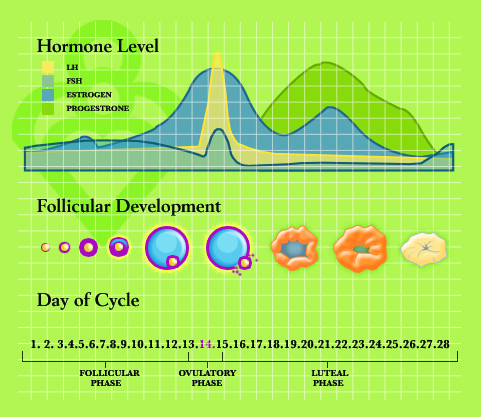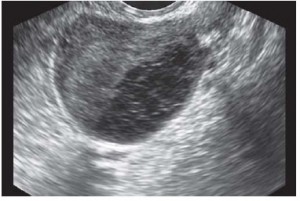Could Luteinized Unruptured Follicle Syndrome and NSAID use be the cause of your unexplained infertility diagnosis?

It is thought, but not proven, that women with “unexplained” infertility may experience the luteinized unruptured follicle syndrome phenomenon a bit more often than fertile women. In addition, many worry that pain relieving NSAID agents, such as aspirin and ibuprofen, interfere with ovulation because they inhibit prostaglandin activity.
Luteinizing hormone primarily controls ovulation
Ovulation is associated with significant hormonal changes, and the process is primarily under the control of luteinizing hormone (LH). This is the hormone that rises in the mid-cycle surge about 36 hours before ovulation and is the basis for home ovulation predictor kits. Ovulation is a process that occurs over a span of time – it is not a full blown explosion as many people think of it.
During ovulation, cellular chemicals called prostaglandins and proteolytic enzymes weaken the wall of the follicle containing the egg, resulting in a rupture through which the egg is released. The egg then enters the fallopian tube where it awaits fertilization with sperm.
The cells left behind in the egg’s follicle undergo a hormonal change called luteinization and produce progesterone, the hormone that prepares and maintains the uterine lining for implantation. This structure is now called a corpus luteum. If pregnancy does not occur, the activity of the corpus luteum declines. As estrogen and progesterone levels fall, menstruation follows.
Luteinized unruptured follicle syndrome occurs when the dominant egg follicle does not rupture
When a woman has regular cycles, in more than 95% of cases it is the sign of regular ovulation. Most tests that are used to confirm ovulation document only the hormonal changes. Serial ultrasound studies can be used to follow the growth of the follicle and its collapse following ovulation. In a small percentage of normal women, the dominant follicle will occasionally undergo the luteinization process without rupture following the mid-cycle surge. As a result of the increased progesterone secretion, the uterine lining develops its normal characteristic changes following ovulation, but no oocyte is released and conception cannot occur. This phenomenon is called the luteinized unruptured follicle (LUF).

It is thought, but not proven, that women with “unexplained” infertility may experience this phenomenon a bit more often than fertile women. The true incidence of this problem in both the fertile and infertile population in unknown but is thought to be quite low. The vast majority of the studies on this topic were published 25-35 years ago but these studies were very poor quality, often conducted with very few patients or a comparison group.
Many studies attempting to describe LUF instead described what we now recognize as ovulation dysfunction and subtle abnormal hormonal parameters of ovulation. The normal corpus luteum can sometimes look like a pre-ovulatory follicle during its initial stages, so capturing the follicular collapse was sometimes difficult to discern, especially with the equipment available at that time. This means that the prevalence of the problem may have been over-estimated. Therefore, the true magnitude and scope of LUF remains a mystery.
Fortunately, this problem is easily resolved by ovulation induction medication and by “triggering” ovulation via an appropriate dose of injectable HCG or gonadotropin-releasing hormone agonist (such as Lupron). Since this is the basis for many forms of simple fertility therapy, the possibility of LUF is covered and post-trigger ultrasound monitoring is not necessary. Of note, in vitro fertilization can, of course, overcome this problem as well.
NSAID use associated with luteinized unruptured follicle syndrome is likely not a major cause of infertility
As mentioned above, the process of ovulation normally involves prostaglandin activity within the follicle. There are many different types of prostaglandins; several are involved in pathways that generate pain and inflammation. Pain relieving agents that belong to the class called non-steroidal anti-inflammatory drugs (NSAIDs) work by inhibiting prostaglandin activity.
A perennial source of worry among the infertility population is whether NSAID use can cause infertility due to luteinized unruptured follicle syndrome. For some women this may indeed be a small contributing factor in some cycles. However, it is not likely a major cause of infertility, especially since infertility rates appear unchanged by discontinuation of NSAID use. Conversely, NSAIDs alone are obviously not an effective means of contraception. However, since the theoretical risk is there, it makes sense to avoid NSAID use, if possible, around the time of ovulation.
This topic seems to crop up and become “popular” every few years. There is a lot of misleading information about it on the Internet, most of it published by patients themselves based upon their own infertility problems. A criticism often levied by such patients is that they are “pushed” toward in vitro fertilization when the problem is actually “just” LUF. In truth, most of the patients that successfully conceive while attending fertility clinics do so via simple therapeutic approaches and do not require IVF.
No matter which approach is taken, the possibility that any of several subtle abnormalities may be at play, including LUF, is taken into account and managed during therapy. At Fertility Answers, we maintain a very high degree of surveillance over emerging data in all the fields of reproductive medicine. We are proud to bring successful, evidence-based, and cost-effective therapies to our patients in a compassionate and personable setting.
Contact us to set up an in-person or telemedicine consultation.


